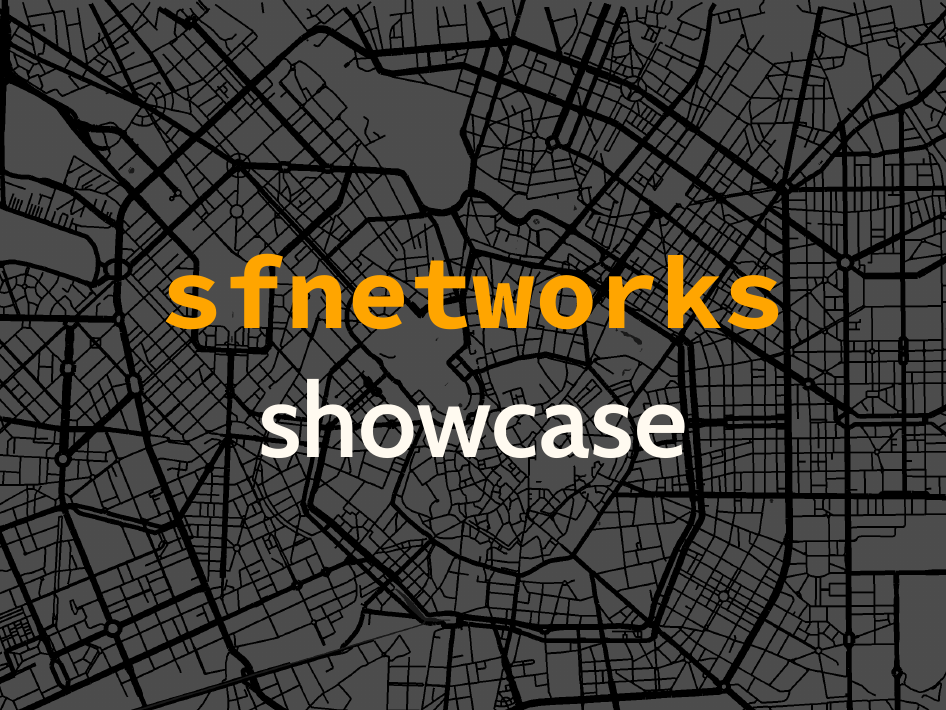

sfnetworks is an R package for analysis of geospatial
networks. It connects the functionalities of the tidygraph
package for network analysis and the sf package for spatial
data science.
Geospatial networks are graphs embedded in geographical space. That means that both the nodes and edges in the graph can be represented as geographic features: the nodes most commonly as points, and the edges as linestrings. They play an important role in many different domains, ranging from transportation planning and logistics to ecology and epidemiology. The structure and characteristics of geospatial networks go beyond standard graph topology, and therefore it is crucial to explicitly take space into account when analyzing them.
We created sfnetworks to facilitate such an integrated
workflow. It combines the forces of two popular R packages: sf for spatial data science
and tidygraph for
standard graph analysis. The core of the package is a dedicated data
structure for geospatial networks, that can be provided as input to both
the graph analytical functions of tidygraph as well as the spatial
analytical functions of sf, without the need for conversion.
Additionally, we implemented a set of geospatial network specific
functions, such as routines for shortest path calculation, network
cleaning and topology modification. sfnetworks is designed
as a general-purpose package suitable for usage across different
application domains, and can be seamlessly integrated in tidyverse workflows.
You can install the latest stable version of sfnetworks
from CRAN
with:
install.packages("sfnetworks")You can install the development version from GitHub with:
remotes::install_github("luukvdmeer/sfnetworks")Note: Two important dependencies of
sfnetworks, the sf package for spatial data
science and the igraph package for network analysis (which
is the main “analysis backend” of tidygraph), require some
low-level software libraries to be installed on your system. Depending
on which operating system you use, this can mean that you have to
install these system requirements first, before you can install
sfnetworks. See the installation guides of sf and igraph for
details.
The main goal of sfnetworks is to connect the
tidygraph package for network analysis and the
sf package for spatial data science. To make the most out
of it, it is recommended to make yourself familiar with these two
‘parent packages’ if you don’t know them yet.
There are currently five vignettes that guide you through the
functionalities of sfnetworks:

(GIF (c) by Lore Abad)
We look very much forward to contributions to the package. See the contributing guide for further details.
This project is released with a Contributor Code of Conduct. By participating in this project you agree to abide by its terms.
This project gratefully acknowledges financial support from the R Consortium.
